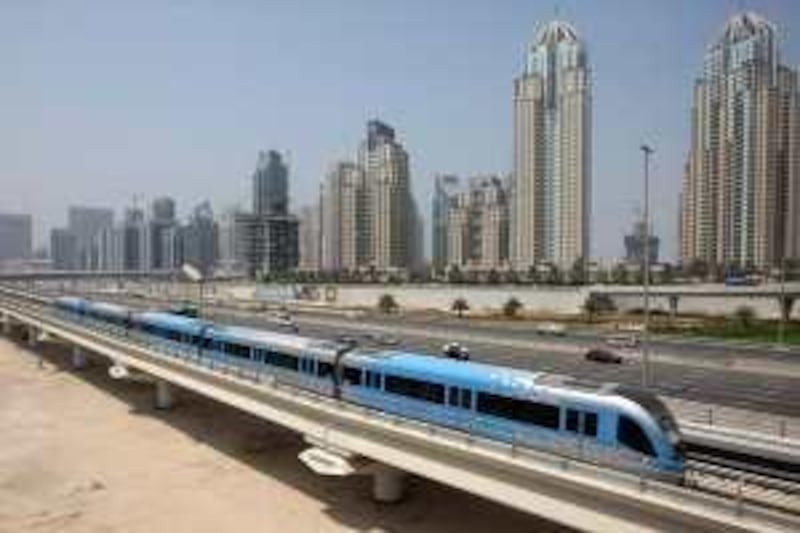There will be no train drivers on the Dubai Metro, and the advantages of this extend well beyond the saving of wages. When computers instead of people are controlling trains, they are able to run more closely together, increasing use of the network by as much as 30 per cent, experts say. But the trains will be monitored continuously by control-room staff and an override system can halt them in the event of an emergency.
Robert Herritty, transportation market director in the industry and public sector business division of Alcatel-Lucent, the France-based company supplying the communications system that sends information between the trains and the central control system, said drivers were simply less efficient. "With a driver, you need a certain headway," he said. "They have to see the red lights and the green lights and leave enough distance for safe braking. That's a human function.
"If you make [the trains] driverless, they move closer together because they react in real time to each other. When one slows down, the other slows down automatically." On London's Underground, he said, some lines were being converted to driverless operations, increasing efficiency by 20 to 30 per cent. Mr Herritty ruled out the option of keeping drivers and instead building long stations and long trains.
"You can do that for mainline operations, but you cannot do that as trains move round a city like Dubai. You have to have frequency." While driverless trains may seem like a novelty, they have a track record across the globe. One of the most successful metro systems, according to Mr Herritty, is east London's Docklands Light Railway, which has no drivers. Serco, the company that operates the Docklands railway, will also operate the Dubai Metro. The system is designed at "Nasa levels of safety", according to Mr Herritty, thanks to a sophisticated test methodology.
A failure is expected, he said, in just one second per 1,000 years. Similar communications technology supplied by Alcatel-Lucent is used on metro systems in Paris, Shanghai and Berlin, and by Network Rail in the UK. If there is a power failure, the trains will stop automatically - just as trains in any railway do - and because they are automatically kept apart by more than the safe braking distance, they will not hit one another before coming to a halt.
"There are vacuum brakes," Mr Herritty said. "You have to have energy to power the braking system to keep the brakes off. At the moment the power fails, the brakes are automatically applied." The manual override allows the central control room to stop a train in the event of a breakdown on another part of the network. "There are people watching what's happening on the system all the time," Mr Herritty said.
There is a radio system between the train and the ground, which houses a fibre-optic network supplied by Alcatel-Lucent that runs across the network. The system has multiple pathways so that if one cable were cut, it would still work. "It's not just data for signalling," he said. "It's data for maintenance, for example, so that if the air-conditioning system needs maintenance, the workshop knows in advance which spares to have.
"By the time the vehicle arrives in the evening, they're ready to work on the train from midnight to 4am when the trains are not running." Similarly, the communications system transmits information about the train's location for the on-board information displays as well as for the video surveillance system and public address system. It sounds very complex and it is. Indeed, Mr Herritty acknowledges that bringing together all the various elements of Dubai Metro - from the communications to the signalling to the rolling stock to the CCTV, to name but four - has been one of the major challenges, especially as many manufacturers are involved.
"Therein lies the secret and the test," he said. "It's difficult to integrate systems that have hundreds of interfaces." But he said travellers could rest assured that the Dubai system, while up-to-date, was not pushing the boundaries. It is tried-and-tested. "It's not cutting edge, it's not obsolete," he said. "Dubai has a world-class system that can be added to and expanded. It's been very well engineered."
The signalling system for the Metro is being supplied by Thales Rail Signalling Solutions, and it will be configured so the minimum gap between trains is 90 seconds. dbardsley@thenational.ae







